Marble stone fabric. The secret of ancient technology (19 photos)
The Uffizi Gallery in Florence displays many interesting exhibits. Among the busts there is one, one might say, unique, which cannot be repeated even in our time. 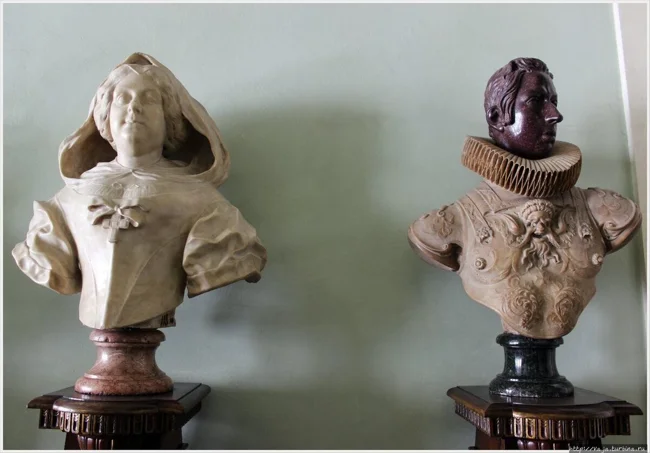
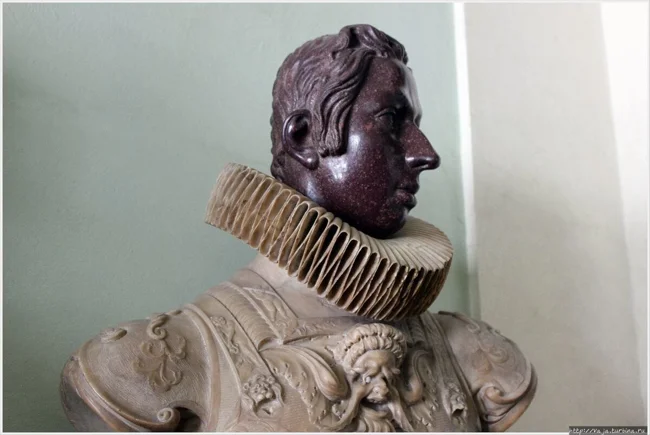
All questions lie in the details. Therefore, such exhibits need to be viewed closely. We are interested in imitation of lush corrugated fabric around the neck. 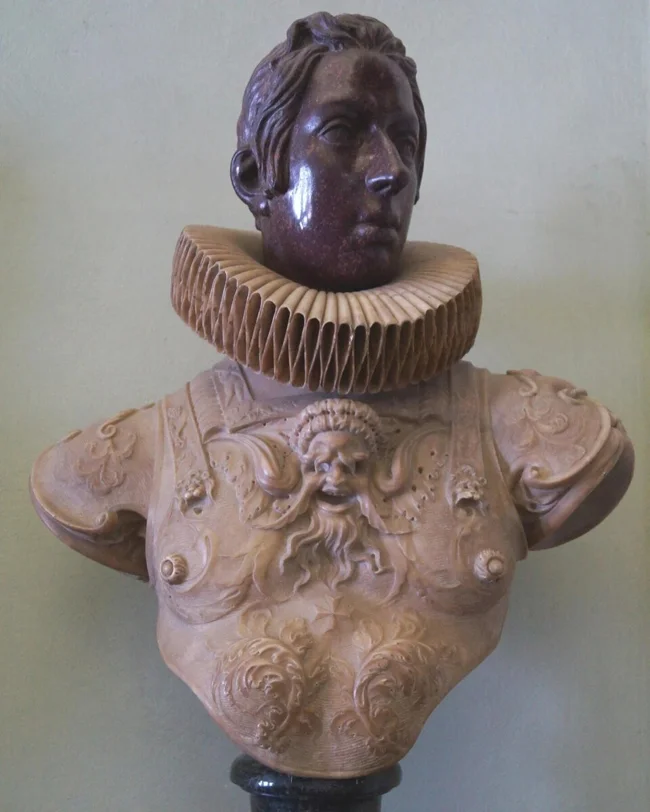

Как садят рис
Смотреть видео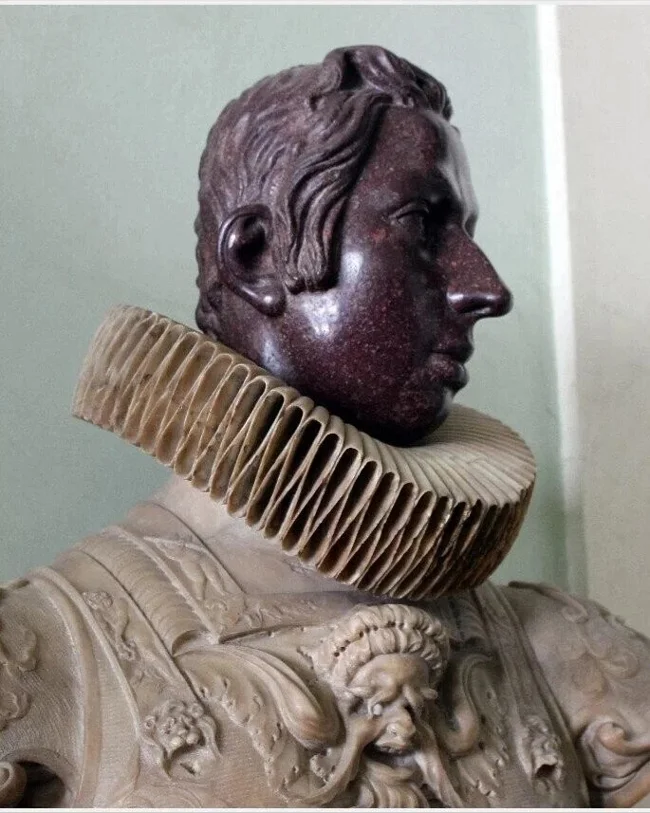
In the 16th-17th centuries in Europe, such an element in clothing (collar) was called gorguera, lechuguilla or raf. This volume was made from starched accordion folded fabric. In many paintings of that time you can see people with such collars. According to legend, the fashion for such a collar was set in the 16th century by a noble Spanish woman who hid her ugly neck behind it. People at that time called this element a “millstone” or “cartwheel.”
Let's take a closer look at the gorgera on the stone bust from the Uffizi Gallery and look at the details.
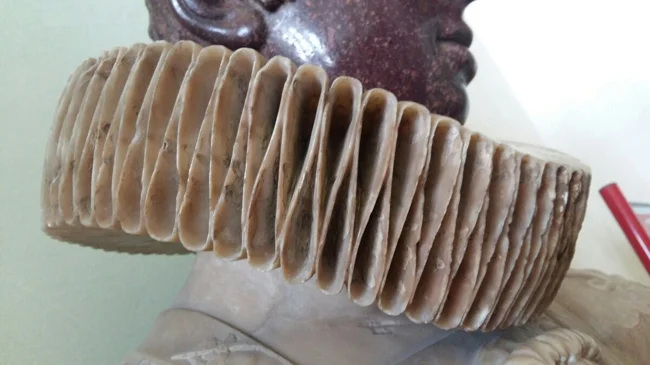
Material: marble. The head is made of a different rock. Any stone is a fragile material. How was the craftsman able to create cavities inside the marble collar? Even with modern cutters and diamond tools, there is a high risk of chipping something during the work.
It seems that the marble was made plastic, rolled out in a thin layer and then rolled up, imitating this collar.
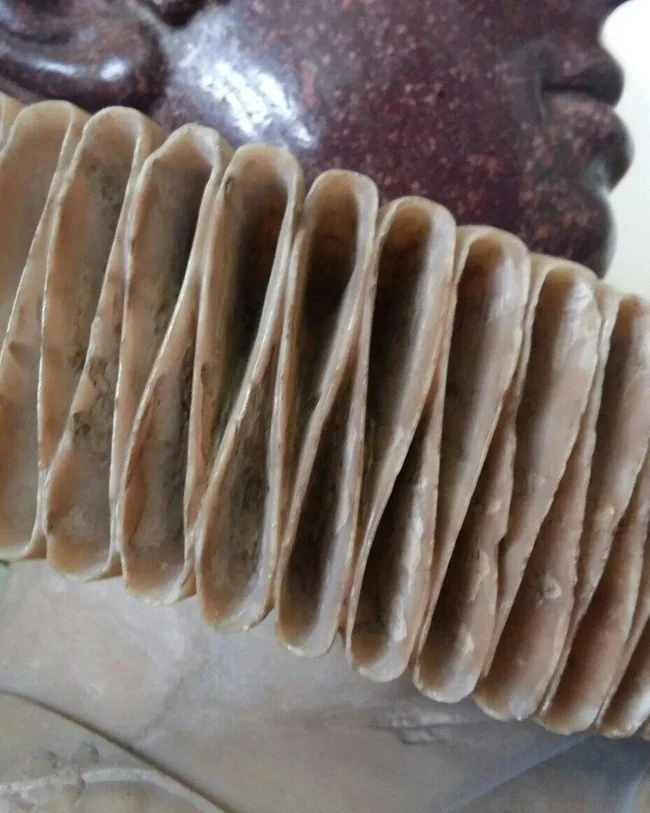
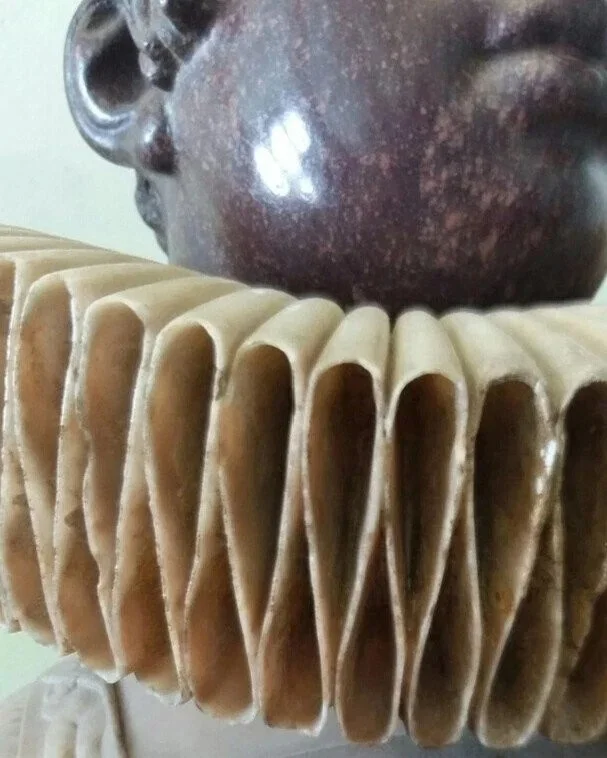
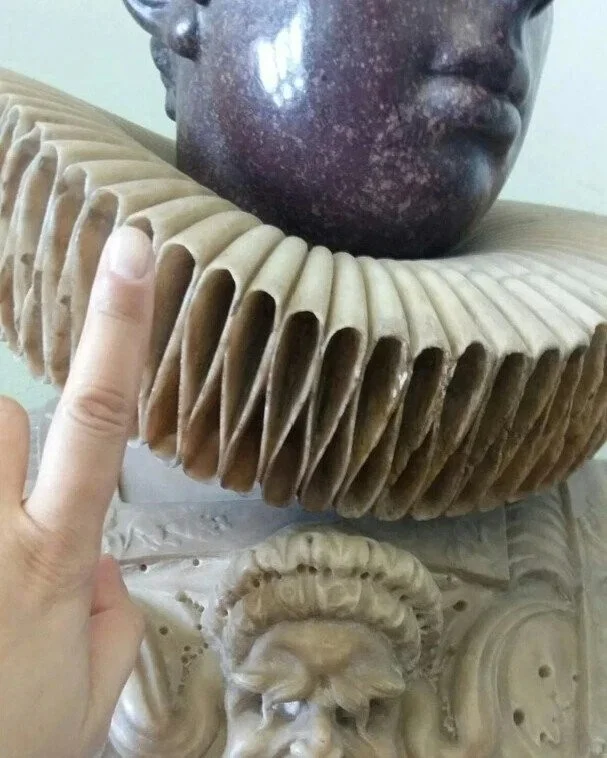
A more realistic explanation may be that it is imitation marble. They made a composition, a mixture similar to marble and which gained strength like plaster. There are many such recipes in old books for masters. Several recipes are given in a not-so-old publication: “The Handicraftsman’s Handbook”, published by Brodersen G.G., 1931.
The basis of these recipes is gypsum and lime. Some recipes indicate that Pompeii cement is also added. Pompeian! This means that these recipes are hundreds of years old and could have been used in ancient times to imitate marble. Nowadays, there is a well-known recipe for imitation marble, which is used by master restorers under the name “Touchstone Marble.”

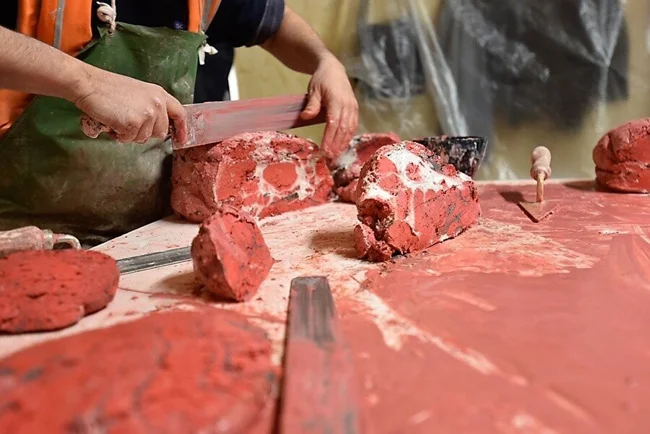
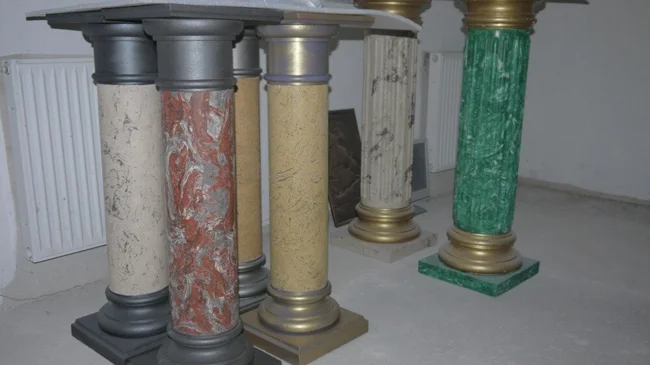
Based on the description of the technology, I realized that the mixture contained gypsum, cement and dyes. Gypsum allows you to make the composition plastic, like dough or plasticine. And cement does not allow plaster to quickly gain strength. Typically, gypsum hardens within 30 minutes after diluting with water.
This is not the only masterpiece with such a ruffled marble collar. The works of the 17th century sculptor Giuliano Finelli, who created busts of famous people of that time, are famous. Here are some of his works.
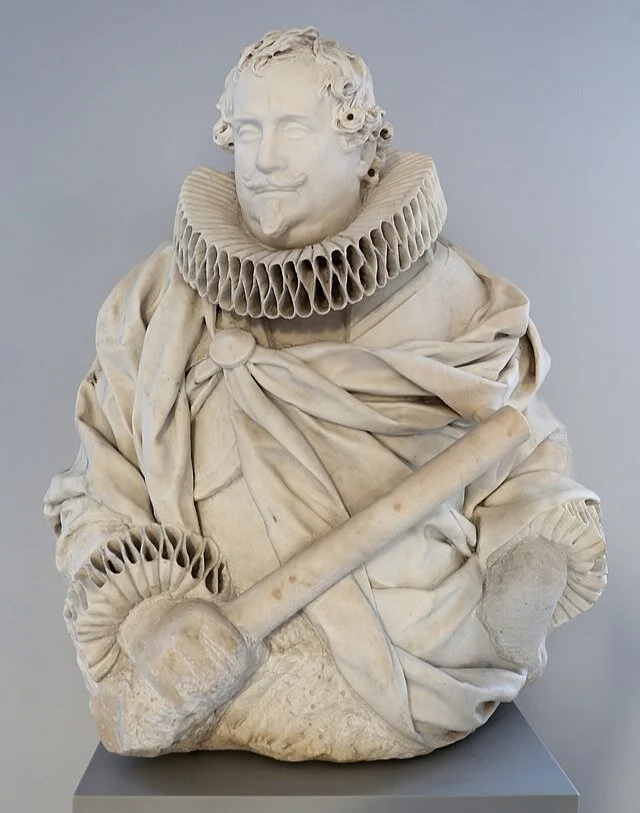

Portrait of Michele Damasceni-Peretti. Marble. Bode Museum, Berlin
The marble lace on this sculpture is especially impressive:
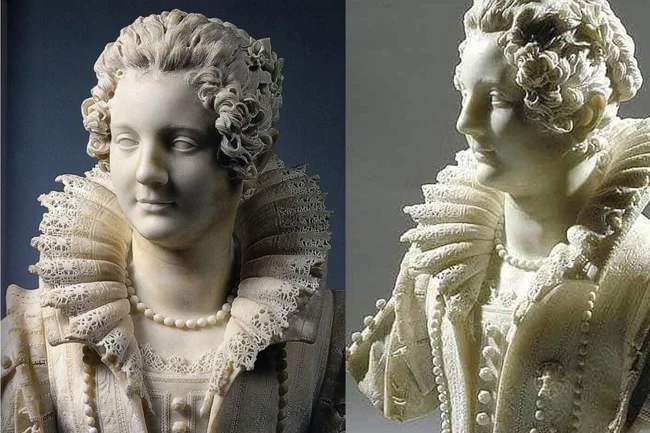
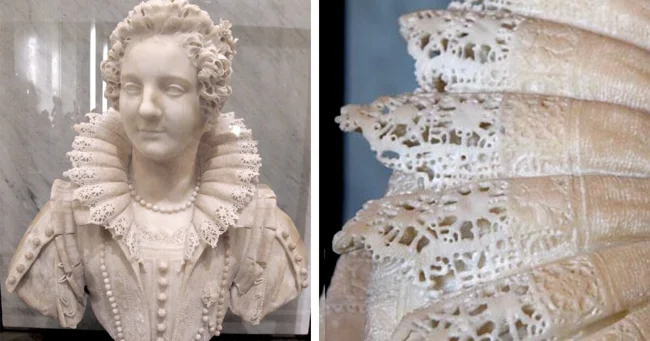
Sculpture of Maria Duglioli Barberini
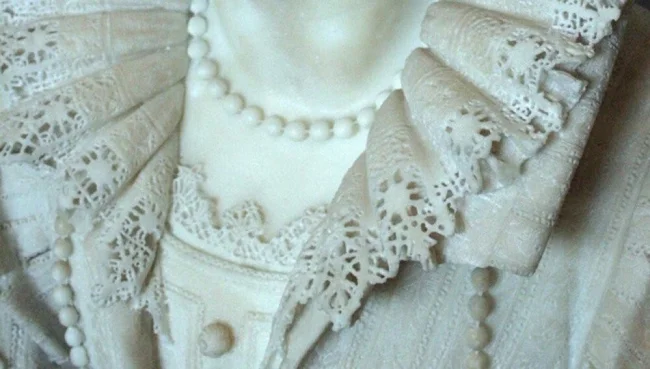
Sculpture of Maria Duglioli Barberini
It seems that the lace fabric was soaked in a marble-gypsum solution and laid on the sculpture. The composition has petrified. No complex tools, rotating cutters, etc. are needed.
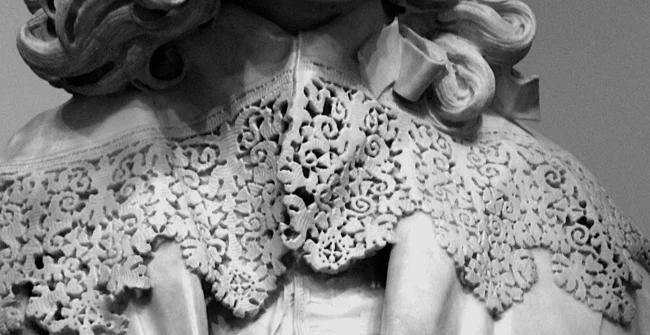
This technology is the best explanation for such complex work. Because It is impossible to select anything in the space under the fabric. Well, putting a fabric impregnated with a marble composition on the bust is a real option and an explanation of what we see.

